Humberto Campana welcomes us to his new São Paulo studio
As one half of Estudio Campana, Humberto Campana built a reputation for elevating found objects into playful furnishings. We visit his new São Paulo studio as he embarks on a solo career
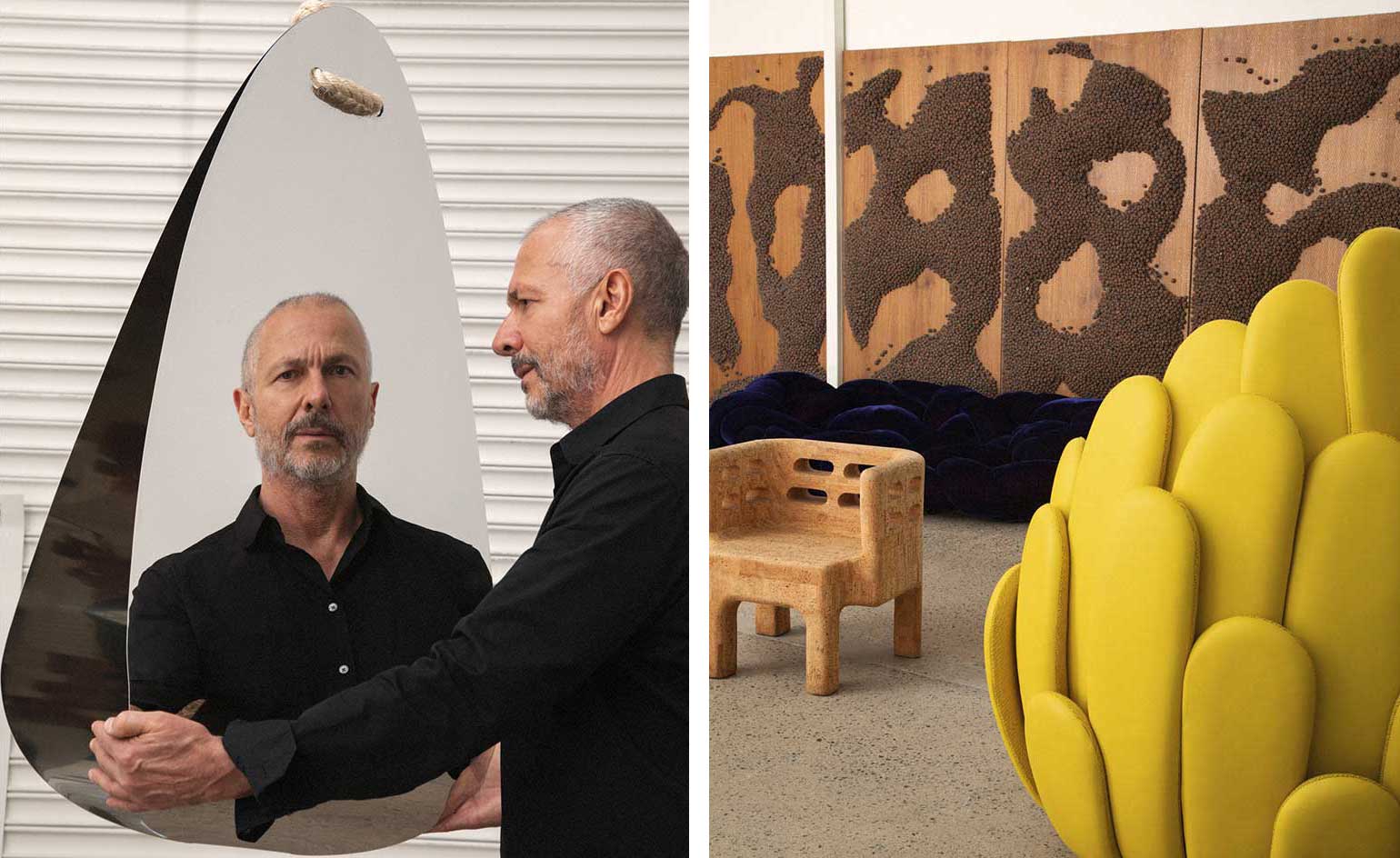
Vava Ribeiro - Photography
Approaching Rua Doutor Miranda de Azevedo, in the bucolic São Paulo neighbourhood of Vila Anglo Brasileira, it is already possible to perceive from afar that there is something fresh and unusual. Here is the new studio of Humberto Campana, who, alongside his younger brother Fernando, saw poetry in cloth dolls and other humble materials from Brazil’s interior, elevating them into collectible design. Working together for four decades, the Campanas became the leading lights of Brazil’s design scene and gained widespread international recognition. Thus, Humberto’s solo career, following the death of his brother last November, has been the subject of great speculation and anticipation.
Despite their eight-year age difference, Humberto and Fernando looked like twins, and could well have been a single person. The two were often inspired by the same object, even if they encountered it at different times, and they shared the same thoughts and often arrived at the studio wearing identical clothes. They left their old studio when the owner decided to sell, and moved to the new studio last November, shortly before Fernando passed away.
Humberto Campana: a new studio in São Paulo and the beginning of a solo career
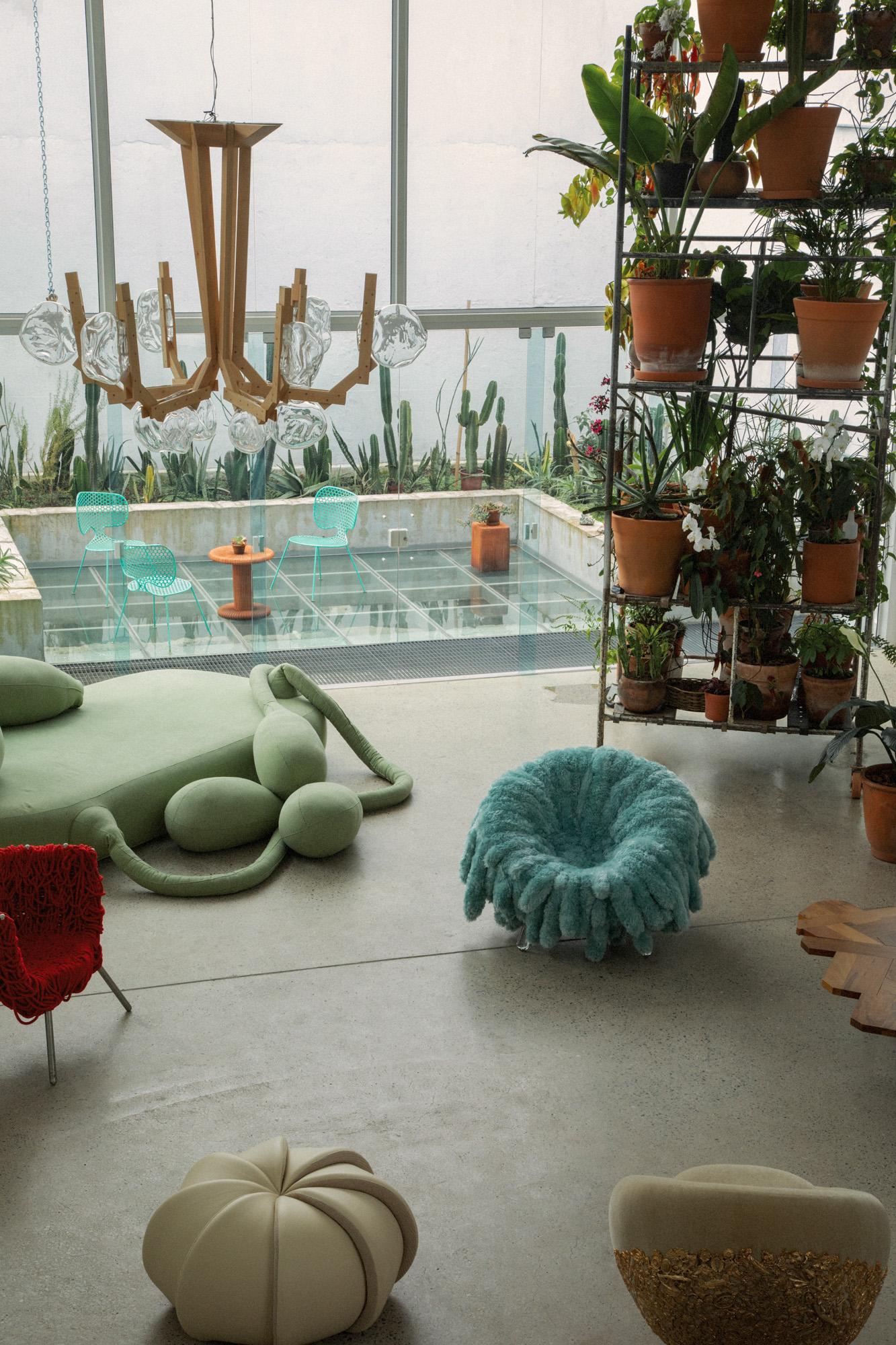
On the studio’s upper floor – which features a ‘Vermelha’ chair for Edra, ‘Zoide’ sofa for Paola Lenti, ‘Merengue’ pouf for Louis Vuitton, and ‘Abbraccio’ armchair for Giustini Stagetti – a glass floor has been installed to allow more light into the floor below
While Humberto came to terms with his loss, he began to contemplate how the new space could offer a blank canvas for his solo career. Its interior is defined by high ceilings and large volumes. On the ground floor is the workshop, with sewing machines and cutting tables amid the plants and prototypes. Upstairs, the office features a winter garden that floods the entire floor with natural light. In addition to more space for production, Humberto now has a generous area in which to exhibit pieces and prototypes. A library houses books on the likes of Irving Penn, Max Ernst, Kaws, Takashi Murakami, Sebastião Salgado, Jaume Plensa, Wolfgang Tillmans, Pierre Keller and James Turrell, while a large conference table, crafted from a single tree trunk, is surrounded by eight different seats designed by the brothers.

In the library, which is covered in golden Ferrero Rocher wrappers, are a pair of 'Favela' chairs for Edra and 'Bomboca' sofa for Louis Vuitton Objets Nomades
The façade is already showing signs of change: a perforated metal sheet allows natural light to enter the main room of the warehouse, which was once a car workshop. Humberto opened a skylight, made a glass floor to let more light into the ground floor, and created outdoor areas for his employees. But he wouldn’t be a Campana if he stopped there: he covered the library and reception area with golden metallic Ferrero Rocher chocolate wrappers to illuminate the environment even further, while referencing the duo’s 2012 'Barocco Rococó' collection, where playfulness met excess.
The previous studio, a rented space that the brothers had occupied since 1992, had been very dark. When he started looking for a new space, Humberto had only one certainty in mind – he wanted something brighter and lighter. ‘I’m going to be 70 years old. As we get older, we want more lightness in life,’ he says. And while this move is linked to changes in his personal and professional life, it is also a reaction to the political tumult Brazil has experienced. ‘The four years of Bolsonaro’s government were very hard,’ he says. ‘I felt hurt in my soul. So I went to plant trees, to purge all the despair that I felt. And this space became my temple, a place of healing.’
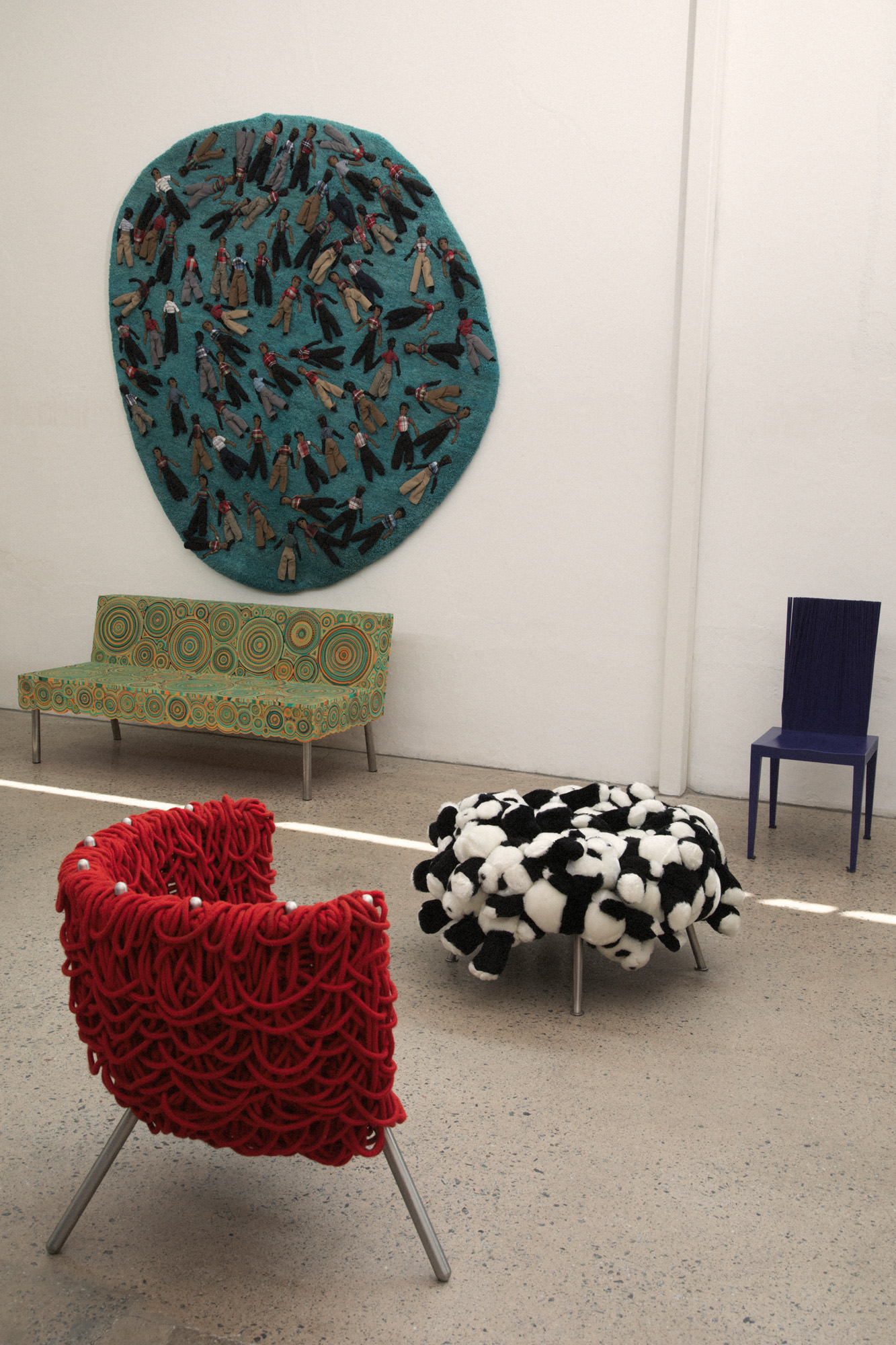
‘Sushi’ sofa, ‘Vermelha’ chair for Edra, ‘Circus’ rug for Nodus, ‘Panda’ stool, and ‘Jenette’ dining chair for Edra
At the back of the studio is a large bell. Campana means ‘bell’ in Italian, but the idea was also to mark this as a sacred space. ‘I think there’s a very spiritual atmosphere here,’ he says. ‘And I see my profession as something sacred, because, in a way, I enter people’s homes. Their temples. I’m very shy, and this is how I communicate and tell so many beautiful stories about Brazil.’
The brothers were always inspired by Brazilian popular culture, developing their own aesthetic through an ‘anthropophagic’ process – the term, coined by poet Oswald de Andrade in 1928, refers to the modernist concept of ‘ingesting’ European references, alongside the symbols of everyday Brazil, in order to ‘vomit’ something of its place that is internationally recognisable. In recent years, however, natural materials gained more prominence in the brothers’ practice, in a way connecting their creations with Arte Povera, an art movement that, in addition to giving meaning to what was considered garbage, valued the ephemeral, and consequently appreciated the cycles of life.
Wallpaper* Newsletter
Receive our daily digest of inspiration, escapism and design stories from around the world direct to your inbox.
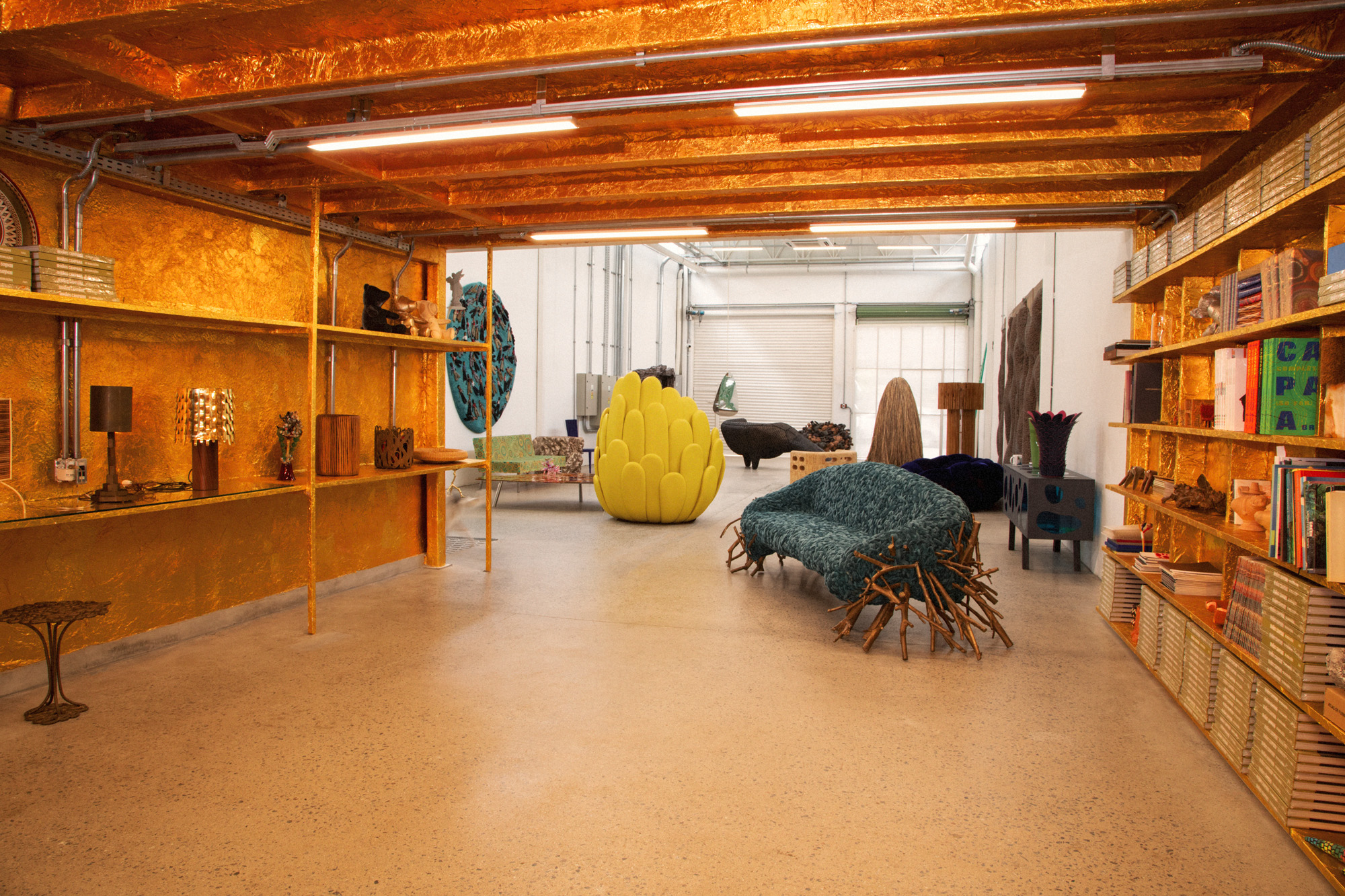
The studio's library
The duo’s first work in clay was a response to the 2015 Mariana dam disaster, in the Brazilian state of Minas Gerais, which caused a deluge of toxic mud, devastating the community. Fernando and Humberto designed terracotta cobogós (perforated bricks often used in Brazilian architecture) in the shape of a hand, as a warning and a call for solidarity. In the studio, these reappear in the form of a table, a floor and a garden sink. Also in 2015, the brothers created an installation in which they formed a landscape from a skin composed of compacted clay pebbles. A piece from this project features in the studio’s entrance gallery, alongside the last collection by the duo: Polifonia Campana, launched in 2022 at Luciana Brito Galeria, is made up of around 40 tables and lamps that again give prominence to clay. Among the inspirations for the collection is the joão-de-barro, a South American bird known for making clay nests resembling ovens.
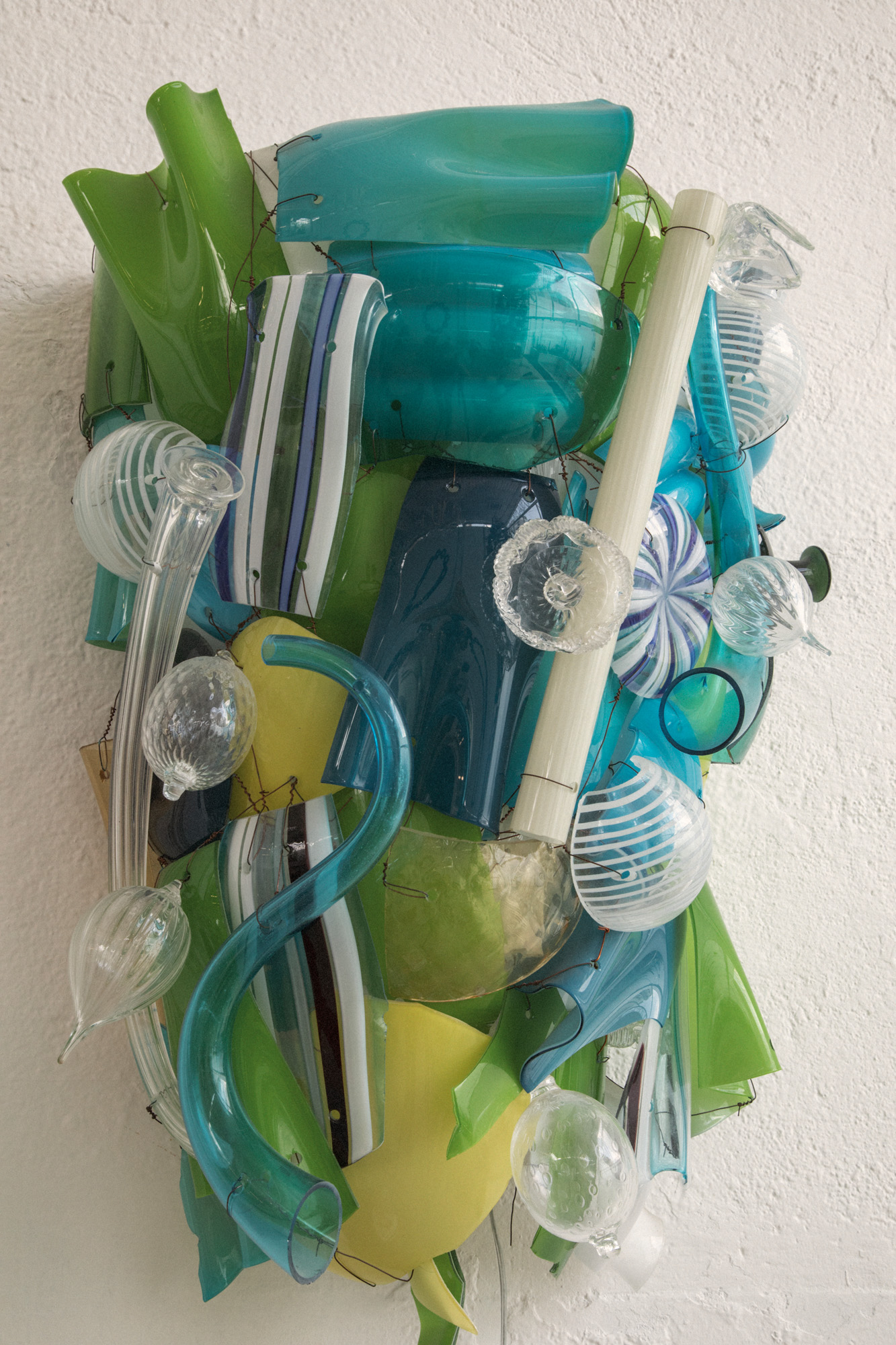
A chandelier, from the Fragments collection for Venini, made from multicoloured scraps of Murano glass
The collection was produced in a small workshop called Cerâmica Pajé, in Santa Gertrudes, about 56km from Brotas, where the brothers were born. ‘I had this idea of going back to our origins. And soon after, Fernando left. We had gone there together and it seems that we were already saying goodbye; the process of this collection had a special energy,’ says Humberto.
‘I still feel Fernando. There was a tribute to him at Maxxi in Rome and, when I left the museum, I saw a gate that had exactly the same design as a bookshelf that Fernando had created called ‘Labirinto’. He was there,’ he recalls.
After releasing an entire collection made of clay, Humberto continued to work with his hands in the earth. For an upcoming exhibition at Friedman Benda’s New York gallery, he is planning to launch furniture made with ‘taipa’, a vernacular material formed of clay and gravel, usually used for building houses in Brazil’s interior.

Humberto and his dog Dora lounge on a ‘Zoide’ sofa
This upcoming collection offered a starting point to contemplate land art projects, and a deeper connection with nature. When the pandemic began, and the Bolsonaro administration turned a blind eye to worsening environmental crimes, the brothers went to Brotas, on the outskirts of São Paulo. They had already planted 16,000 native tree seedlings with the intention of reforesting the region and attracting the animals that had fled, and they set about planting 4,000 more. The place has now been transformed into a park that will eventually house 12 green pavilions designed in the Campanas’ signature style. Made with local materials, plants and natural fibres, such as bamboo, agave, mandacaru (a native cactus) and eucalyptus straw, these works of living architecture will grow and transform over the years. Among the six that have already been created is a clay and agave installation that works like a sundial. It’s about understanding and accepting the passage of time and life.
The same thought was carried over to the new studio, which, not by chance, has three gardens: two outside and one vertical, on a scaffold that Humberto used for the studio’s construction. ‘I want to bring more plants. I’m going to fill all the spaces with them,’ he says. It’s how he’s survived in the concrete jungle that is São Paulo. Fernando once said of his elder brother: ‘Humberto has loved to observe plants since he was a little boy. He was very playful and studious. I remember him in the garden explaining his homework to the plants – it was his way of memorising.’
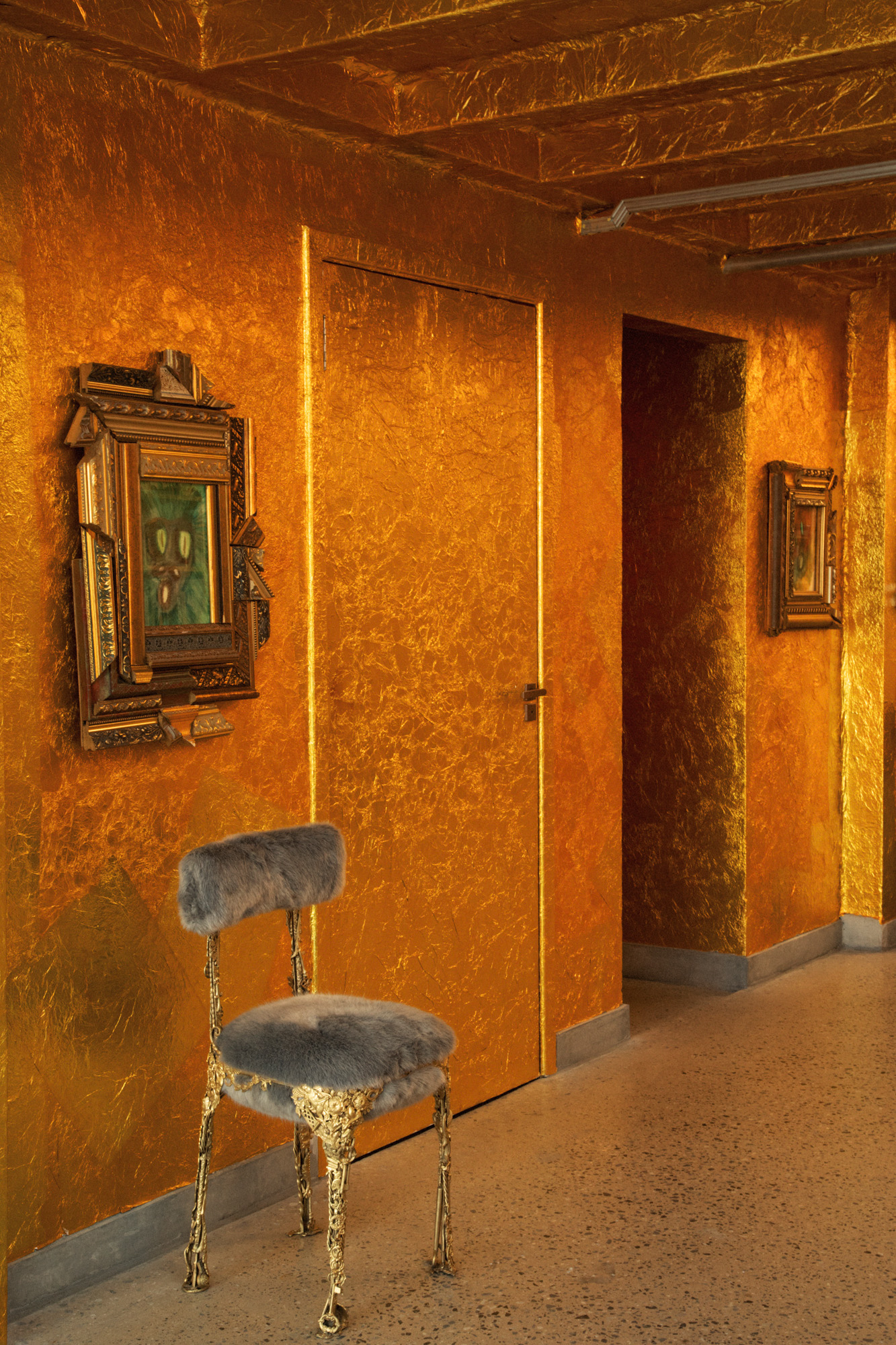
A ‘Lupa’ chair, part of the Brazilian Baroque collection for Giustini Stagetti
The sons of an agronomist, the brothers were brought up with a strong sense of duty to the environment. Humberto recalls, ‘Our father always taught us the culture of planting and preserving. And I always say that our museums are our biomes: the Amazon, the Atlantic Forest, the Cerrado, the Caatinga, the Pampa and the Pantanal. Nature is our Louvre! It is important that people see this richness.’
Many of the brothers’ designs reflect their childhood in Brotas. And the new space is no different: Humberto says the idea of using chocolate wrappers as a wall covering came from a childhood fascination with candy wrappers. ‘I had a very rich and creative childhood. But neither Fernando nor I could fit in such a small town. So we created our world,’ he recalls. One of their most striking references was the local cinema, called Cine São José, where they saw the films of Pier Paolo Pasolini. The cinema inspired the title of an exhibition at Friedman Benda’s LA gallery this February, where Humberto officially launched his first solo piece: the ‘Jalapão’ chair, made of leather and capim dourado, a grass that grows in Jalapão, in Brazil’s interior; its golden straw is usually braided and used to make local handicrafts.
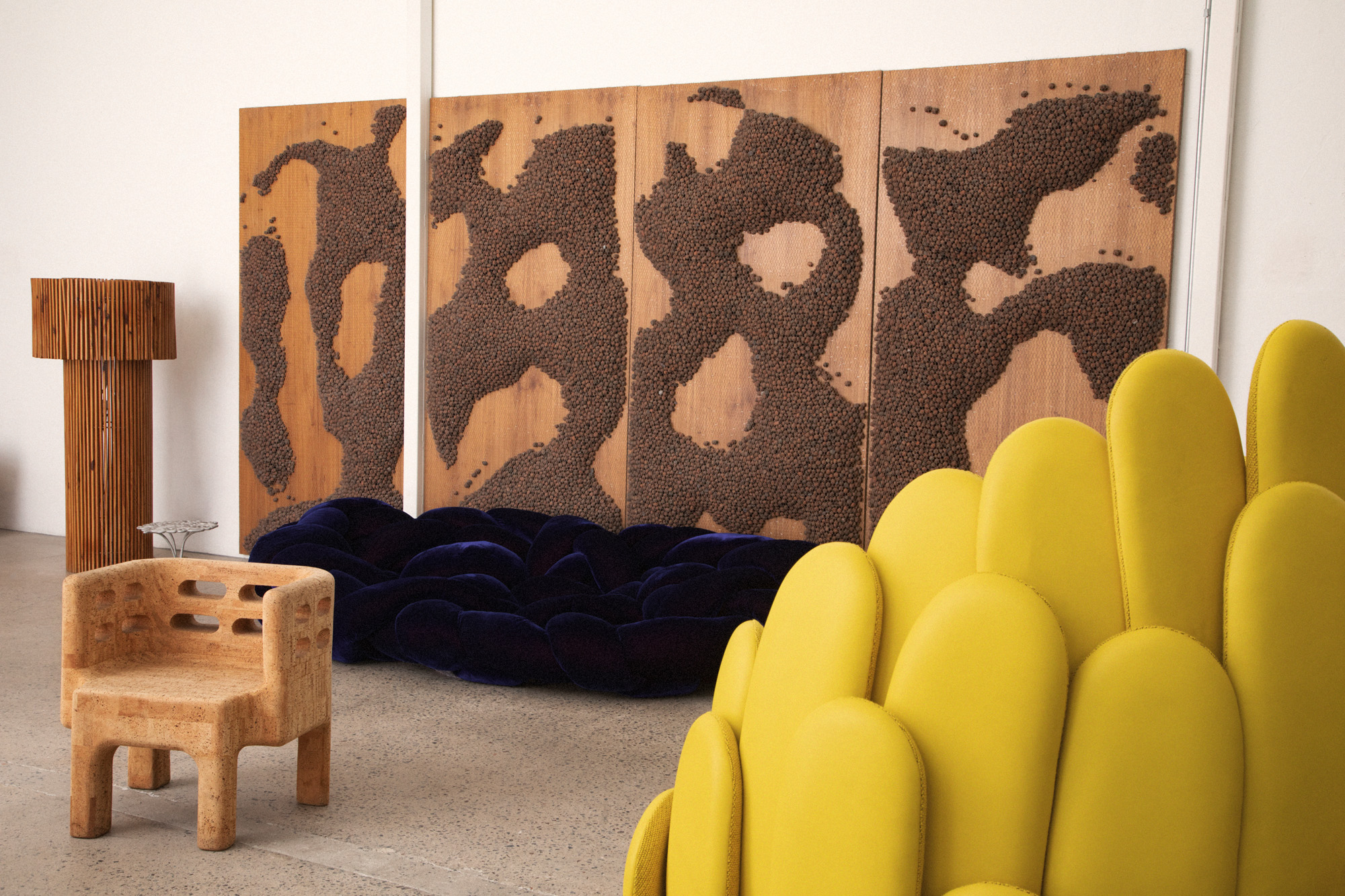
A modular wood floor lamp, ‘Sobreiro’ cork armchair, created in collaboration with Amorim Cork, ‘Pele’ wall panels, ‘Boa’ sofa for Edra, and ‘Bulbo’ armchair for Louis Vuitton
Humberto hopes to transform the new studio into a foundation for design meetings and research, in addition to hosting exhibitions by other creatives. ‘In 20 years, I’ll be 90, and I hope to be fine. But one day I won’t be here anymore. Life has given me so much, I think it’s important to leave something for the city, for society,’ he says.
But he hasn’t stopped his design practice. In addition to the New York exhibition, he is presenting new work with Edra, Louis Vuitton, Qeeboo, Lasvit and Citco during Milan Design Week 2023. ‘For me, the important thing is to stay sane and never stop creating,’ he says. ‘To keep telling stories and improving the lives of others, with ideas and hope. To show that everything can be reused and have a new life. And I’m in very good health and full of ideas.’ He confesses that, when he was younger, he was more nervous about competition, more concerned with appearances and material possessions. But life has taught him that other things are more important and, at the age of 60, he let go of many things. Now, ten years later, he is ready to take another step. ‘Today I can say that I fit inside myself and I’m in the best moment of my life.’
A version of this story appears in the April 2023 Global Interiors issue of Wallpaper*, available now in print, on the Wallpaper* app on Apple iOS, and to subscribers of Apple News +. Subscribe to Wallpaper* today
-
 Marylebone restaurant Nina turns up the volume on Italian dining
Marylebone restaurant Nina turns up the volume on Italian diningAt Nina, don’t expect a view of the Amalfi Coast. Do expect pasta, leopard print and industrial chic
By Sofia de la Cruz
-
 Tour the wonderful homes of ‘Casa Mexicana’, an ode to residential architecture in Mexico
Tour the wonderful homes of ‘Casa Mexicana’, an ode to residential architecture in Mexico‘Casa Mexicana’ is a new book celebrating the country’s residential architecture, highlighting its influence across the world
By Ellie Stathaki
-
 Jonathan Anderson is heading to Dior Men
Jonathan Anderson is heading to Dior MenAfter months of speculation, it has been confirmed this morning that Jonathan Anderson, who left Loewe earlier this year, is the successor to Kim Jones at Dior Men
By Jack Moss
-
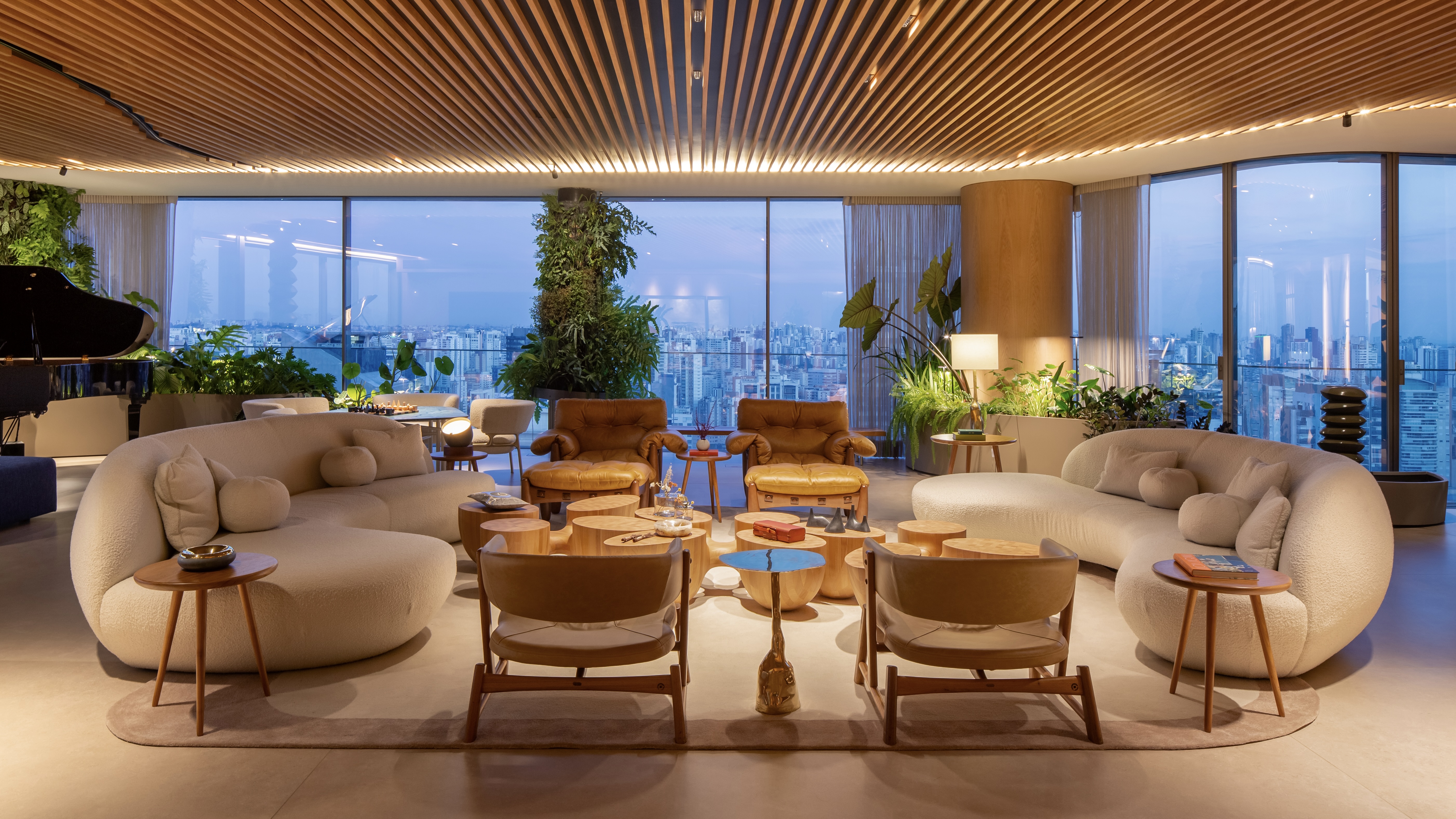 This São Paulo apartment combines wood-clad interiors, biophilia and show-stopping city views
This São Paulo apartment combines wood-clad interiors, biophilia and show-stopping city viewsThe Andre Luque-designed Heritage apartment features a retractable open plan, a plethora of natural materials and self-irrigating plants
By Anna Solomon
-
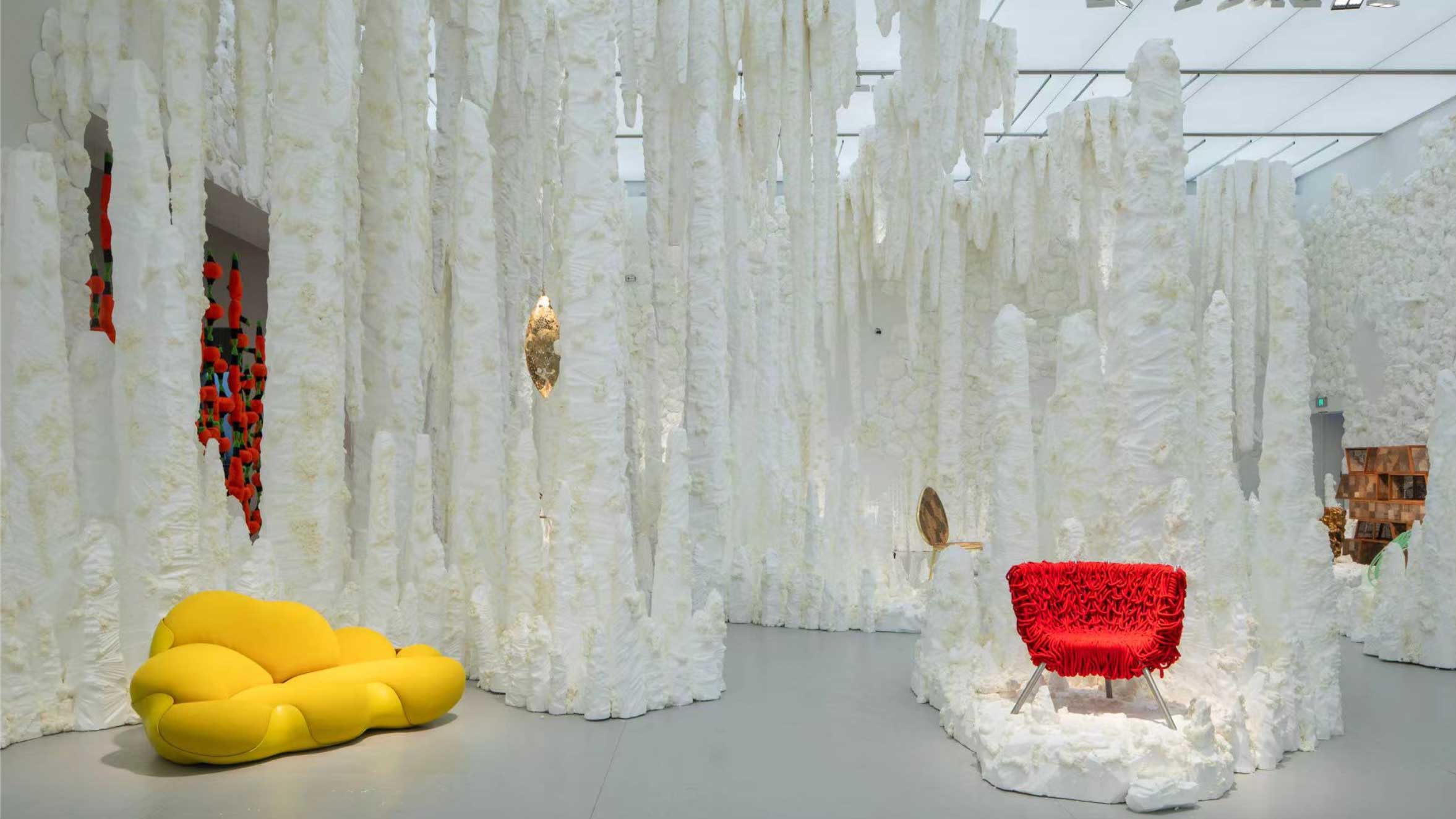 Explore Estúdio Campana's cave of wonders on view in Shanghai
Explore Estúdio Campana's cave of wonders on view in Shanghai'Impermanence - 40 Years of Estúdio Campana' is on view at Shanghai's Power Station of Art (PSA) until 8 September 2024
By Rosa Bertoli
-
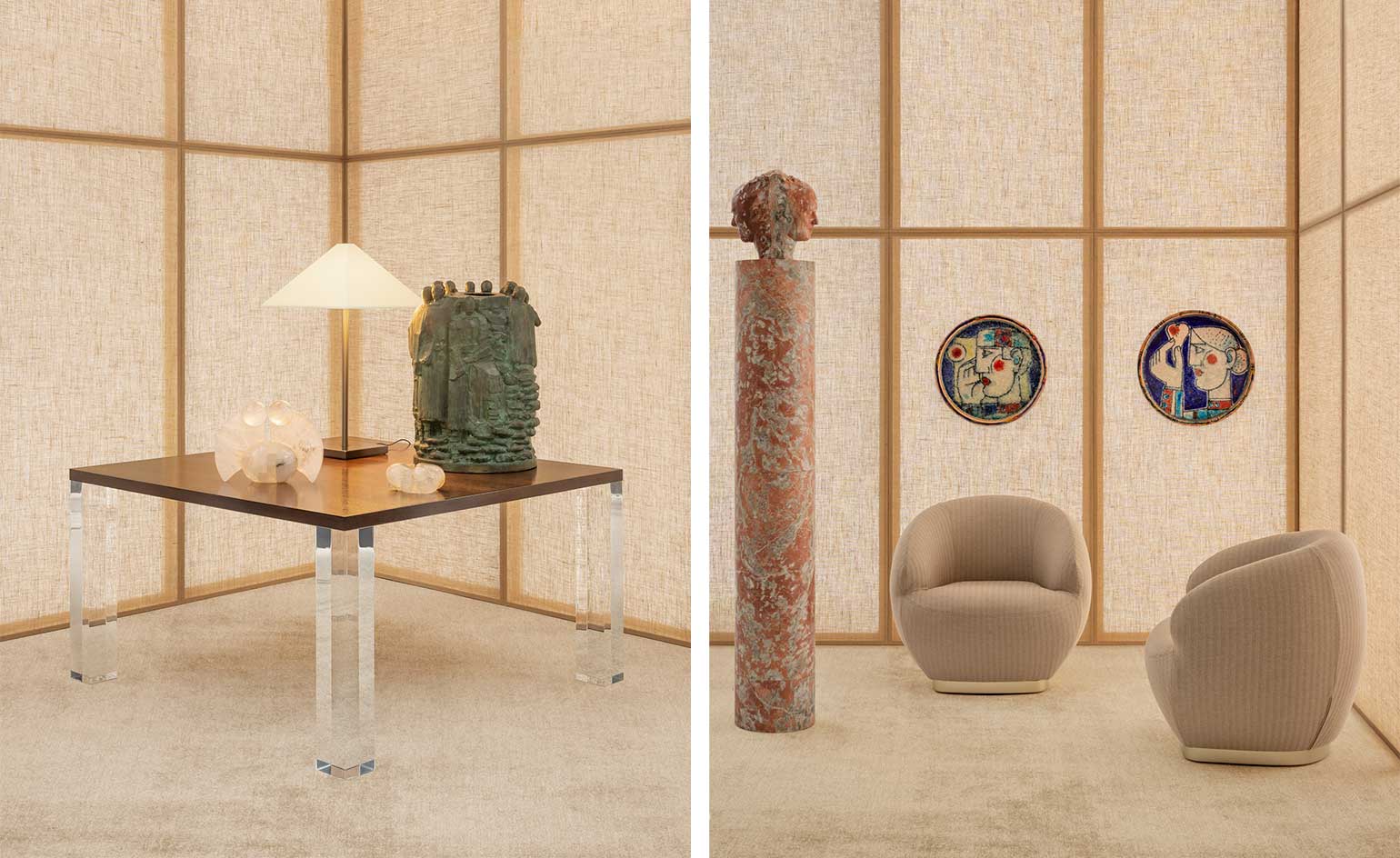 Art, artefacts and Armani Casa: step into our Made in Italy showcase
Art, artefacts and Armani Casa: step into our Made in Italy showcaseIn this photographic series, we combine Armani Casa’s timeless furniture collections with Italian art and rare artefacts to tell the story of Made in Italy craftsmanship
By Nick Vinson
-
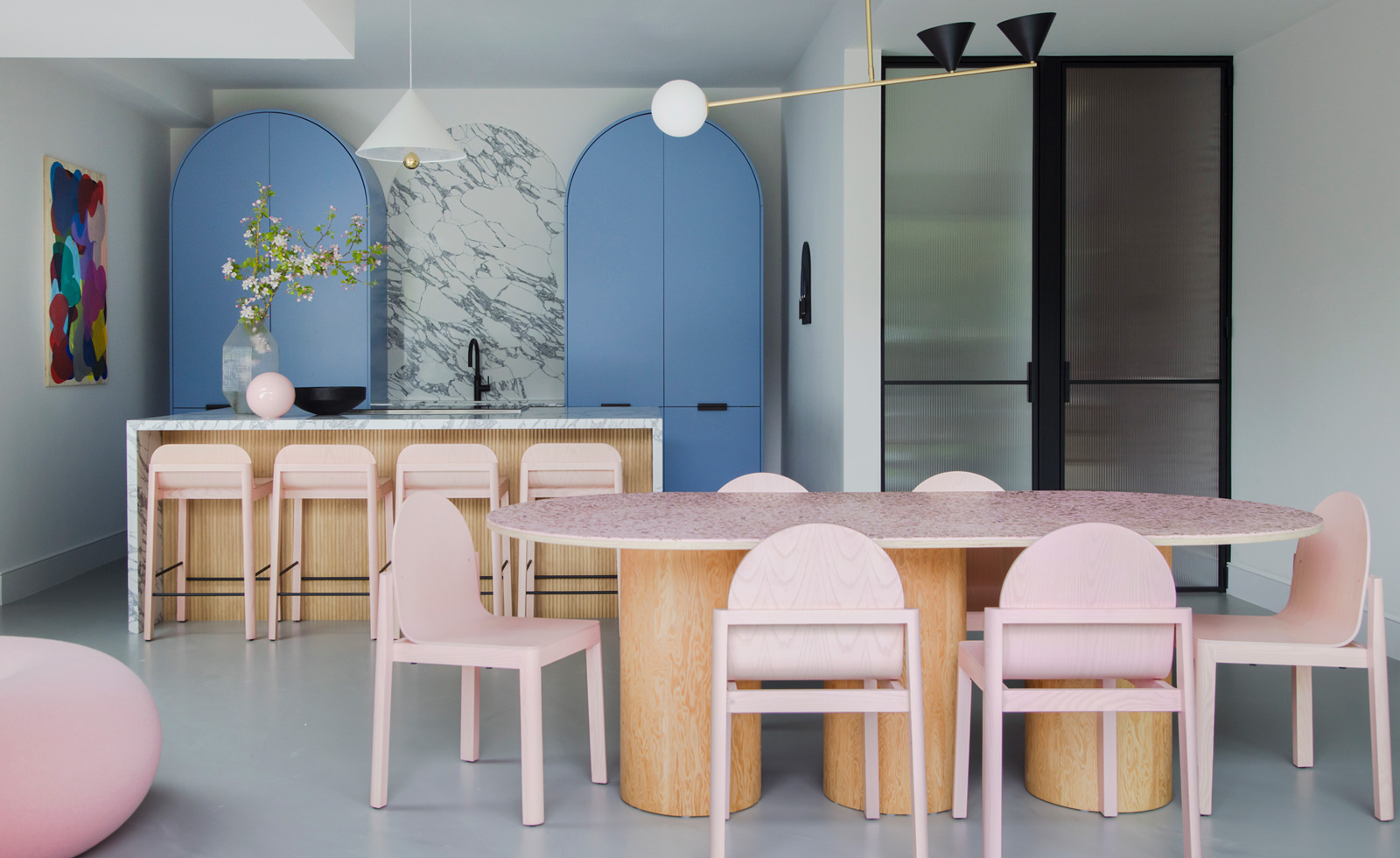 Playful design codes rule in this London Victorian family home
Playful design codes rule in this London Victorian family home2LG Studio embraces colour and comfort in an extensive renovation of a Victorian family home
By Hannah Silver
-
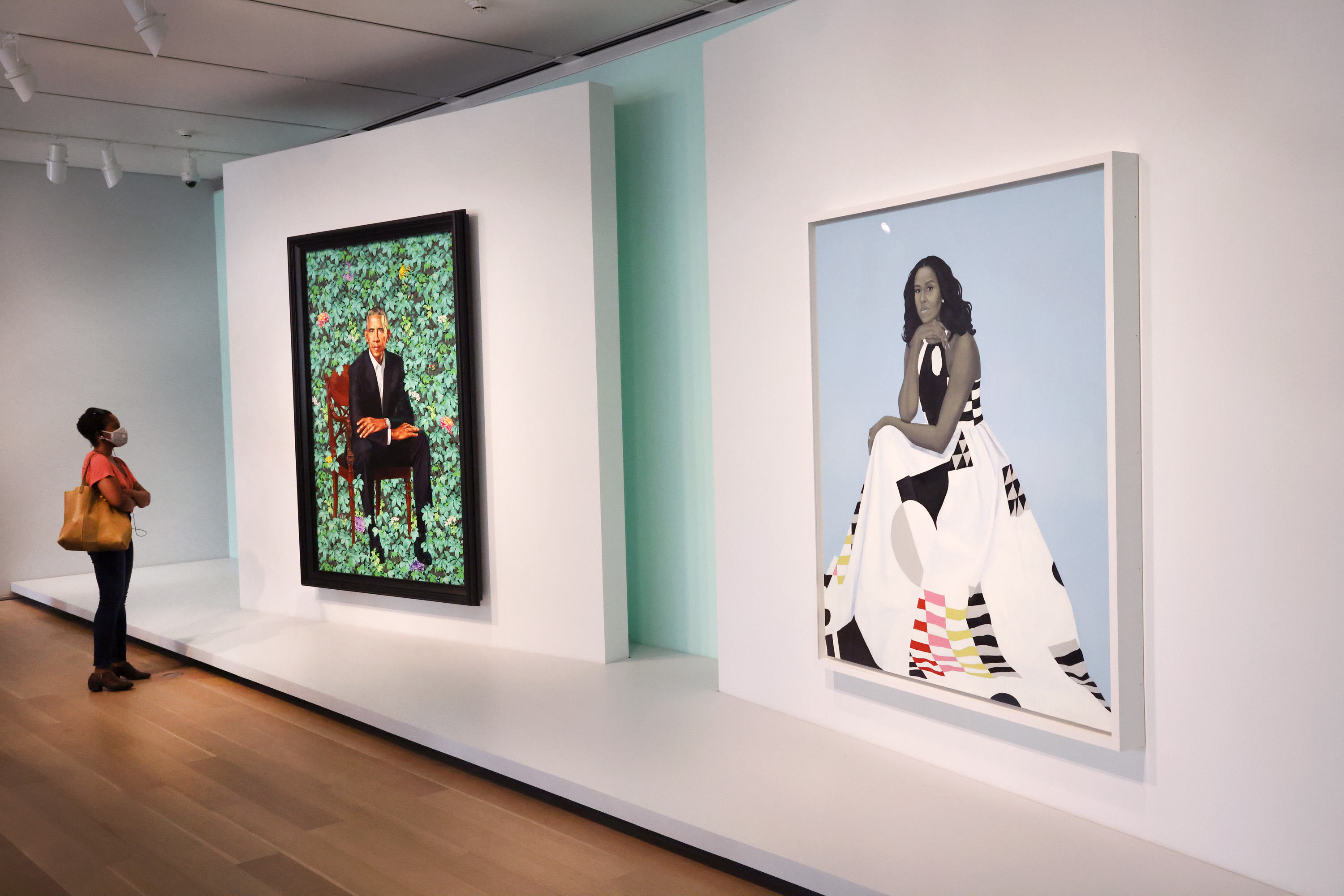 Design at the White House: the creatives working with US Presidents past and present
Design at the White House: the creatives working with US Presidents past and presentInterior designers, fashion designers and artists, whose collaborators have included the White House and its residents, with commissions that range from interior refits to presidential portraits
By Pei-Ru Keh
-
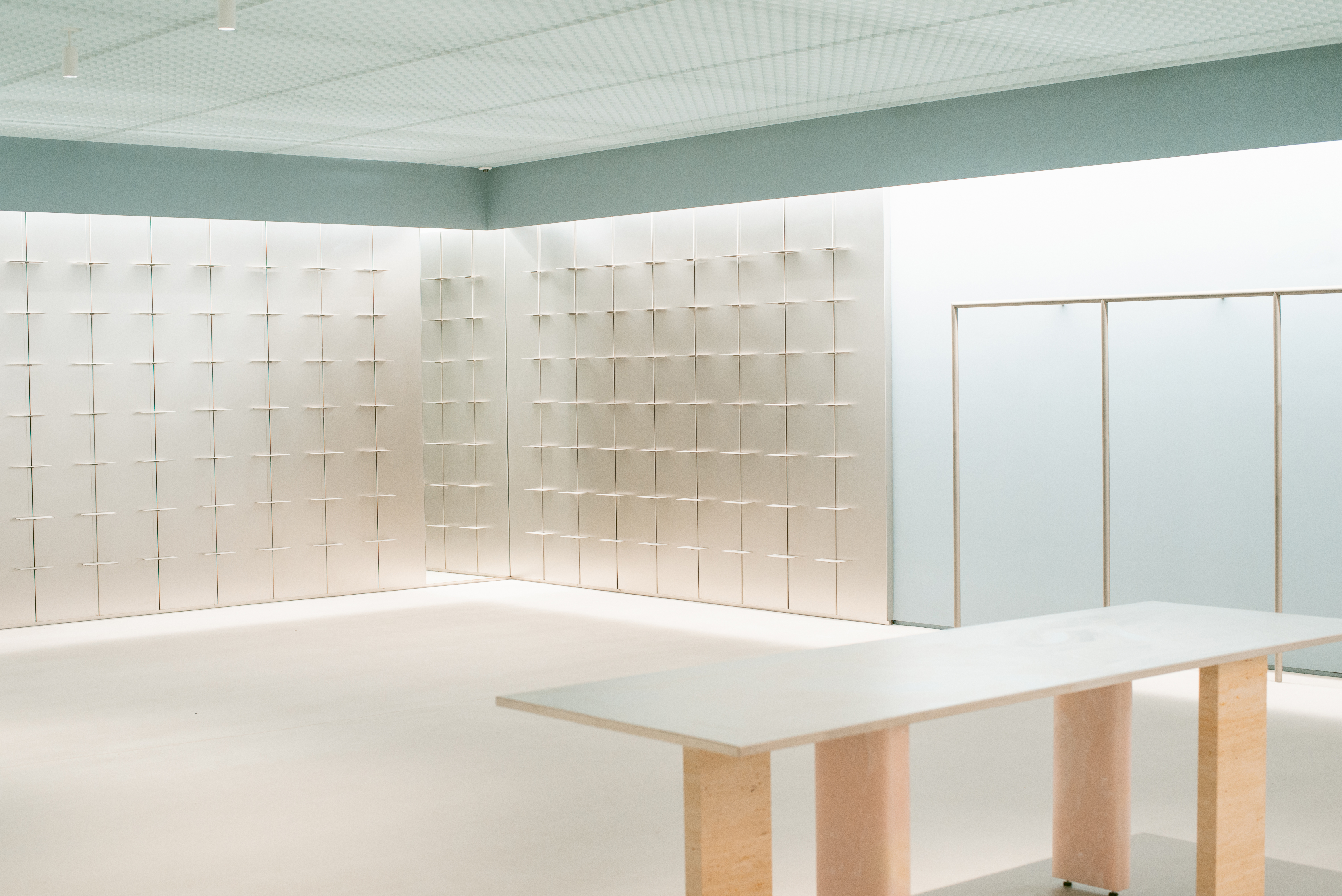 Essx store opens in New York’s Lower East Side
Essx store opens in New York’s Lower East SideEssx is a new concept and community store by local architecture firm Leong Leong and designer Yossi Shetrit
By Pei-Ru Keh
-
 Eastside Bowl scores big with a maximalist postmodern aesthetic
Eastside Bowl scores big with a maximalist postmodern aestheticDesigned by Cowboy Creative, Eastside Bowl in Nashville, Tennessee, combines American nostalgia and southern charm
By Pei-Ru Keh
-
 The Design Parade kicks off a creative Summer in the French Mediterranean
The Design Parade kicks off a creative Summer in the French MediterraneanDesign Parade 2023, set between Hyères and Toulon until the fall, features a showcase of design by emerging and established talent
By Jean Grogan